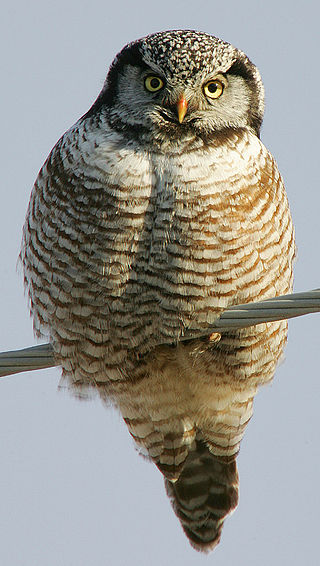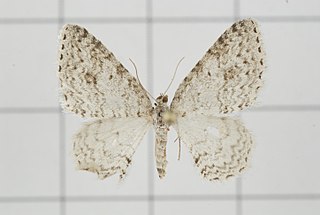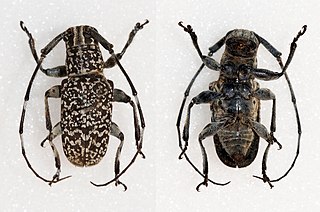
The northern hawk-owl or northern hawk owl is a medium-sized true owl of the northern latitudes. It is non-migratory and usually stays within its breeding range, though it sometimes irrupts southward. It is one of the few owls that is neither nocturnal nor crepuscular, being active only during the day. This is the only living species in the genus Surnia of the family Strigidae, the "typical" owls. The species is sometimes called simply the hawk owl; however, many species of owls in the genus Ninox are also called "hawk owls".

714 Ulula is a main belt asteroid. It is orbiting the Sun near the 3:1 Kirkwood Gap with a period of 4.04 years and an eccentricity of 0.057. It was discovered by German astronomer J. Helffrich on 18 May 1911 from the Heidelberg Observatory and was named after an order of owls. The asteroid has a mean radius of 20 km and is spinning with a rotation period of seven hours. Its pole of rotation lies just 4–14° away from the plane of the ecliptic. The surface spectrum shows a pyroxene chemistry and is consistent with mesosiderites/HED meteorites.

True Love is an album by Toots & the Maytals. It is a collection of their classics re-recorded with guest artists including Willie Nelson, Eric Clapton, Jeff Beck, Trey Anastasio, No Doubt, Ben Harper, Bonnie Raitt, Manu Chao, The Roots, Ryan Adams, Keith Richards, and The Skatalites. The album was produced and conceived by Richard Feldman and released on the V2 label.
Daniele Cacia is an Italian professional footballer who plays as a striker. He is a former Italy Under 19 international.

PPC Ltd, a supplier of cement, lime (material) and related products in southern Africa. It has 11 cement factories and a lime manufacturing facility in six African countries including South Africa, Botswana, Democratic Republic of the Congo, Ethiopia, Rwanda and Zimbabwe. The company is headquartered in Sandton (Johannesburg).

Lucas Alberto Simón García is an Argentine naturalized Chilean professional footballer who played as a striker.
Cacia is a civil parish in the municipality of Aveiro. The population in 2011 was 7,354, in an area of 35.75 km².

Dyspessa ulula, the garlic mottled, is a species of moth of the family Cossidae. It is found from central and southern Europe through Russia to central Asia. It is also found in Syria, Iran, Iraq and parts of North Africa.

Hydrelia ulula is a moth in the family Geometridae first described by Max Bastelberger in 1911. It is native to Taiwan.

Mesosini is a tribe of longhorn beetles of the subfamily Lamiinae.

Cacia is a genus of longhorn beetles of the subfamily Lamiinae.
Cacia is a civil parish in Aveiro Municipality, Portugal.
Cacia elegans is a species of longhorn beetles of the subfamily Lamiinae.
Cacia inculta is a species of beetle in the family Cerambycidae. It was described by Francis Polkinghorne Pascoe in 1857.
Cacia butuana is a species of beetle in the family Cerambycidae. It was described by Heller in 1923.

Cacia vermiculata is a species of beetle in the family Cerambycidae. It was described by Heller in 1923. It is known from the Philippines.
Cacia semiluctuosa is a species of beetle in the family Cerambycidae. It was described by Émile Blanchard in 1853.

Cacia cretifera is a species of beetle in the family Cerambycidae. It was described by Frederick William Hope in 1831. It is known from Java, Cambodia, India, Myanmar, China, Nepal, Thailand, Laos, and Vietnam. It feeds on Berberis thunbergii and Albizia julibrissin.

Ramal do Porto de Aveiro is a railway branch in Portugal which connects the cargo terminal of Cacia to the Port of Aveiro. It was opened in March 2010.

Dares ulula is a species of stick insects. Like most other members of the genus Dares, the species is native to Borneo, more precisely in the northwest of the island. The males are extremely prickly even for the representatives of the genus Orestes. Females are colored with a relatively high contrast.












